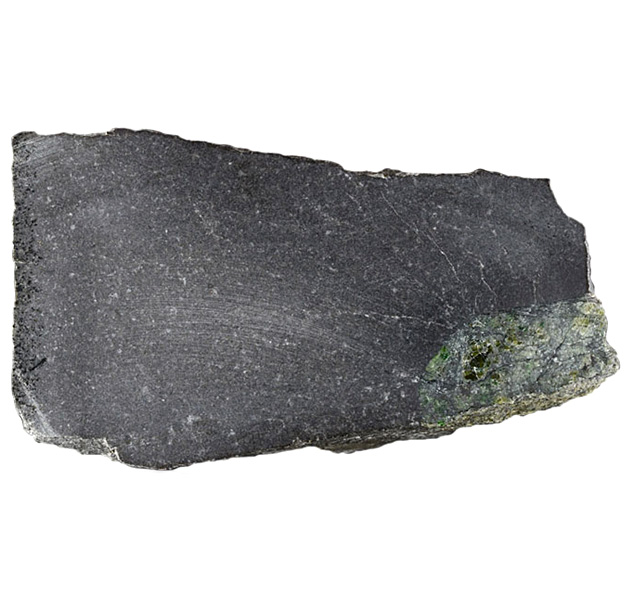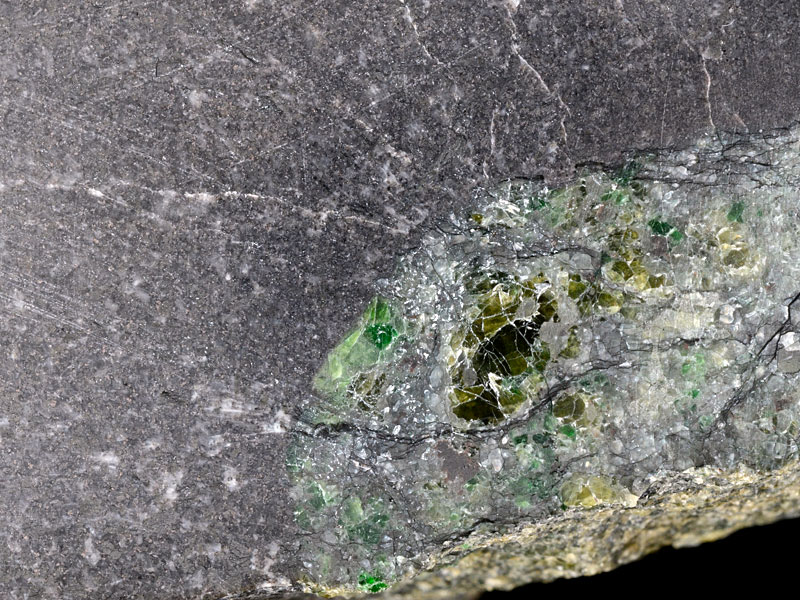
Fact sheet
This sample is a xenolith from within a basalt lava flow, brought up from between 30 and 90 km beneath the Earth's surface from deep within the upper part of the Earth's mantle. The lava was erupted during the Carboniferous period, in an area of the Midland valley that was often beneath sea level and saw limestone deposition. The rock comes from Hillhead Quarry, Dundonald, Ayrshire, Scotland, which was created to produce aggregate for roads. The quarry is also known for the prominent columnar jointing in a thick basalt flow.
The thin section exhibits both the xenolith and encompassing basalt. The basalt contains a randomly oriented network of plagioclase grains with pyroxene and relatively unaltered olivine crystals. However some of the olivine grains may actually be fragments of the xenolith. On the left of the thin section plagioclase is absent and the lithology is dominated by coarse-grained olivine and spinel. Much of the olivine is fractured but not strongly altered, and fracturing is more pronounced towards the edge of the xenolith.
The United Kingdom Virtual Microscope (UKVM) collection consists of igneous, sedimentary and metamorphic rocks from around the UK.
It is intended as a teaching resource, helping to tell the story of the common rock types and how they form, and reflecting the history of the UK at the margins of the continent of Europe. The collection is a series of teaching sets, for example igneous rocks from the North Atlantic Igneous Province and SW England; high-temperature metamorphic rocks from Scotland and low-temperature metamorphic rocks from Wales; and sedimentary rocks, including English limestones and sandstones.






